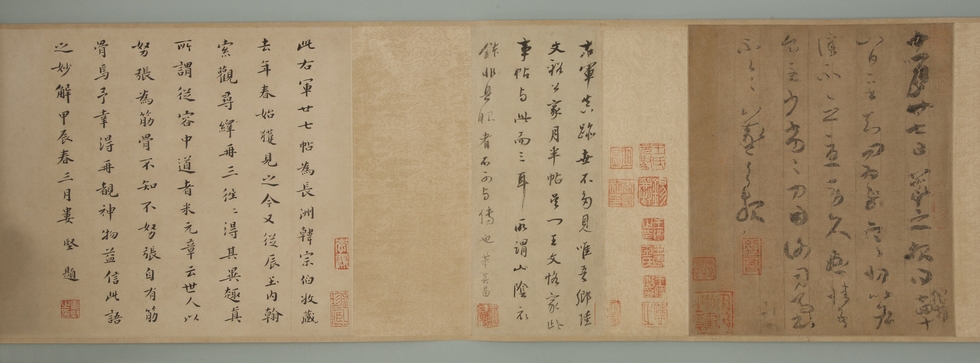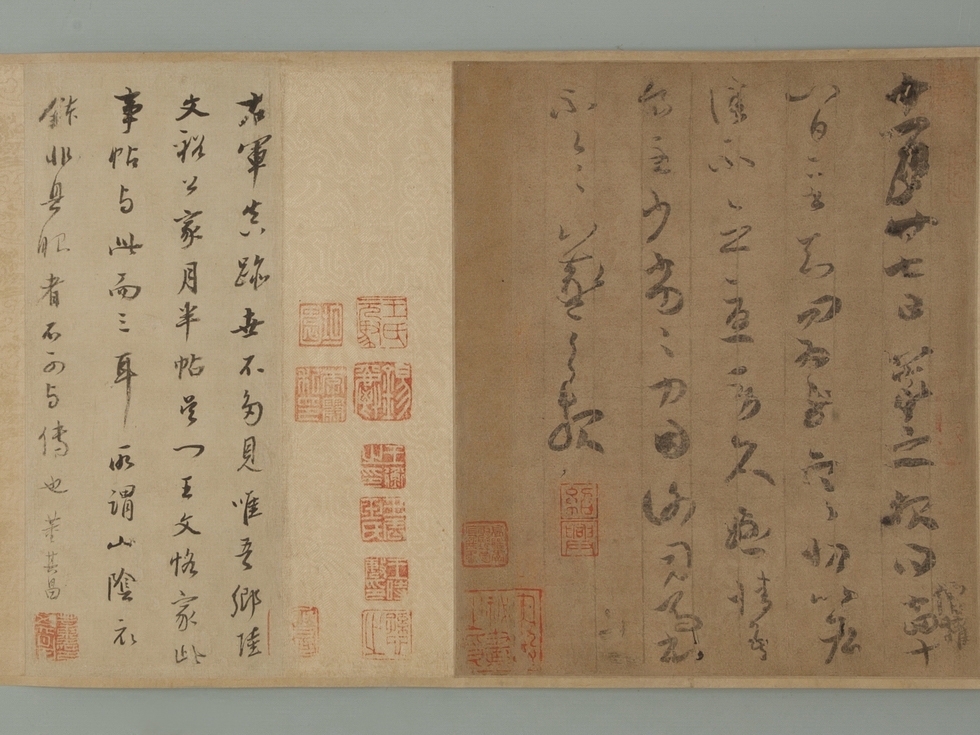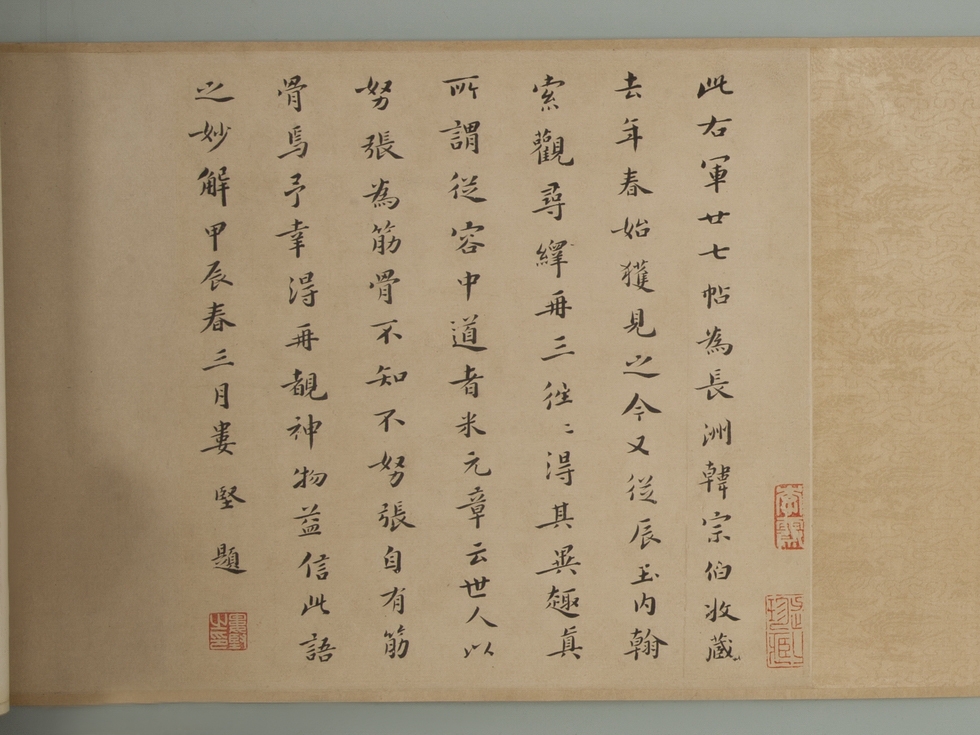唐 摹 王羲之 草书寒切帖卷
唐摹本
纸本
纵25.6厘米 21.5厘米
唐人摹写王羲之的草书《寒切帖》(又称《谢司马帖》、《廿七帖》),此帖幅面不大,纵25.6厘米,横21.5厘米,草书五行,共五十一字:“十一月廿七日羲之报:得十四、十八日二书,知问为慰。寒切,比各佳不?念忧劳久悬情。吾食甚少,劣劣!力因谢司马书,不一一。羲之报。”帖后有明代董其昌、娄坚等跋记。
这篇尺牍是王羲之写给对方的回信。大意是告之近况:“收到您的两封书信,得知您对我的问候,甚感欣慰。现在天气严寒逼人,近来都好吗?您长期操心劳累,我一直挂念在心。我进食很少,身体衰弱。还要勉力作书给谢安司马,其他的就不一一说了。羲之答书。” 王羲之,字逸少,是东晋著名书法家,他擅长各种书体,尤其擅写行书、草书,他开创了妍美书风,被后人尊称为“书圣”。他的书法受到历代书家推崇,可惜真迹早已毁佚,今天我们所能见到的王羲之书法,唯有钩摹的墨本和法帖摹刻拓本二种。因为钩摹的墨本是直接从原迹上勾勒填墨而成,最为接近王羲之书法原貌,因而尤显珍贵,世人将唐摹本羲之帖视同为王羲之真笔。
天津博物馆藏《寒切帖》是王羲之晚年成熟书作的代表。已故著名书画鉴定家徐邦达先生称《寒切帖》“双钩淡墨帖,极为明显,觚棱转折,备见锋芒,精好亦不在《远宦》之下,是唐摹善本无疑”。
Piercing cold, cursive script
Wang Xizhi(321-379)
Tang dynasty copy(618-907)
Hand scroll, ink paper
Height 25.6cm, Width 21.5cm
This hand scroll was made in the Tang dynasty by tracing and filling a rubbing of the original, preserving five columns of Wang Xizhi’s cursive script. The brushworks is inspired, executed with unrestrained and free movements that subsume convention within the supreme untrammelled vitality of the rounded and fluid strokes. This relatively comprehensive record of Wang Xizhi’s calligraphic style is an invaluable source for research on both Wang Xizhi’s calligraphy and on formats of carved texts. The end of the scroll features colophones by Dong Qichang and Luo Jian of the Ming dynasty. Such masterpieces of calligraphy, with so clear a provenance, are rarely found in China.
Wang Xizhi had the style name Yi Shao, and was a native of what is now Linyi in Shandong Province. He was a famous calligrapher of the Eastern Jin, known in his lifetime as the Sage of calligraphy.







 电话:022-83883000
电话:022-83883000 传真:022-83883088
传真:022-83883088 地址:天津市河西区平江道62号
地址:天津市河西区平江道62号